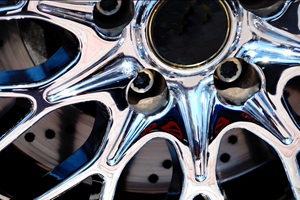How to Increase, Decrease Conductivity of Paint
Q. I apply my liquid coatings with an electrostatic gun. How can we increase or decrease the conductivity of the paint?
Q. I apply my liquid coatings with an electrostatic gun. How can we increase or decrease the conductivity of the paint?
A. If you are not getting good transfer efficiency with electrostatically applied coatings, check to see if your parts have a good electrical ground connection. Nothing will work if this is not confirmed. Secondly, check the conductivity of the paint with a conductivity meter. If the paint is not conductive enough, polar solvents can be added to increase conductivity and improve transfer efficiency and wrap of the coating. Polar solvents are great conductors of electricity. Some include acetone, ethyl acetate, isopropanol and water (if using a waterborne system). If your coating is too conductive or “too hot,” there is not much you can do. The amount of non-polar solvents that need to be added would be very large in comparison to the paint already in the pot. Some non-polar solvents to consider are toluene and xylene, if you only need to move slightly less polar.
Q. We use low-gloss coatings and notice we can get some gloss variation from time to time. What can I do to minimize this?
A. Pay attention to film builds. Coatings use flatteners that work by roughing up the surface of the coating to reduce the gloss. A rougher surface will reflect light in many different directions, making it appear flat. A smoother surface will reflect light in one direction making it appear glossy. The number one influencer of gloss is film build. Lower film builds will allow more flattener at the surface and make it appear rougher or lower gloss. Higher film builds will cause the flattener to be buried in the film and less at the surface. As a result, the coating will appear smoother or higher gloss. Secondly, if you are using a 2K coating, make sure you follow the proper mix instructions. Too much hardener can increase gloss and too little can decrease gloss. Finally, however you cure the coating, make sure it is consistent. Variations in cure (both time and temperature, or humidity if air dried) can cause gloss fluctuations.
Q. How can I extend 2K pot life and minimize waste?
A. Ask your paint supplier to recommend a retarder or accelerator to slow or speed the pot life or cure. Ideally, the retarder should slow down the reaction rate and extend the amount of time the paint is usable before it becomes too thick to apply. Retarders can be very slow solvents, acids or other chemicals to slow down the chemical reaction. This will extend the length of time the mix is usable. Also, pay attention to the accelerator being used. It should have a special solvent that prevents the accelerator from acting until that special solvent evaporates. The combination is great for speeding cure time without reducing pot life. If you are a large-volume user, I recommend a plural component mix machine that will automatically mix the paint components on demand so pot life is not an issue. If you walk away from the gun without flushing, it will alarm when the material in the paint line is approaching end of pot life.
Dan Szczepanik is director of marketing for transportation segments at Sherwin-Williams Product Finishes. Visit oem.sherwin-williams.com.
Originally published in the March 2017 issue.
Related Content
How to Maximize Nickel Plating Performance
The advantages of boric acid-free nickel plating include allowing manufacturers who utilize nickel plating to keep up the ever-changing regulatory policies and support sustainability efforts.
Read MoreHow to Address Declining Powder Coating Coverage Over Time
Fine particles from reclaim could be to blame for powder coating problems that emerge over time. Avoid problems by keeping hooks clean, maintaining guns and using reclaim powder quickly to avoid accumulation of fines.
Read MoreA Chromium Plating Overview
An overview of decorative and hard chromium electroplating processes.
Read MoreConveyors and Paint Systems
Choosing the right conveyor system, coating technology, and ancillary equipment.
Read MoreRead Next
Education Bringing Cleaning to Machining
Debuting new speakers and cleaning technology content during this half-day workshop co-located with IMTS 2024.
Read MoreDelivering Increased Benefits to Greenhouse Films
Baystar's Borstar technology is helping customers deliver better, more reliable production methods to greenhouse agriculture.
Read MoreEpisode 45: An Interview with Chandler Mancuso, MacDermid Envio Solutions
Chandler Mancuso, technical director with MacDermid Envio discusses updating your wastewater treatment system and implementing materials recycling solutions to increase efficiencies, control costs and reduce environmental impact.
Read More














.jpg;maxWidth=300;quality=90)









